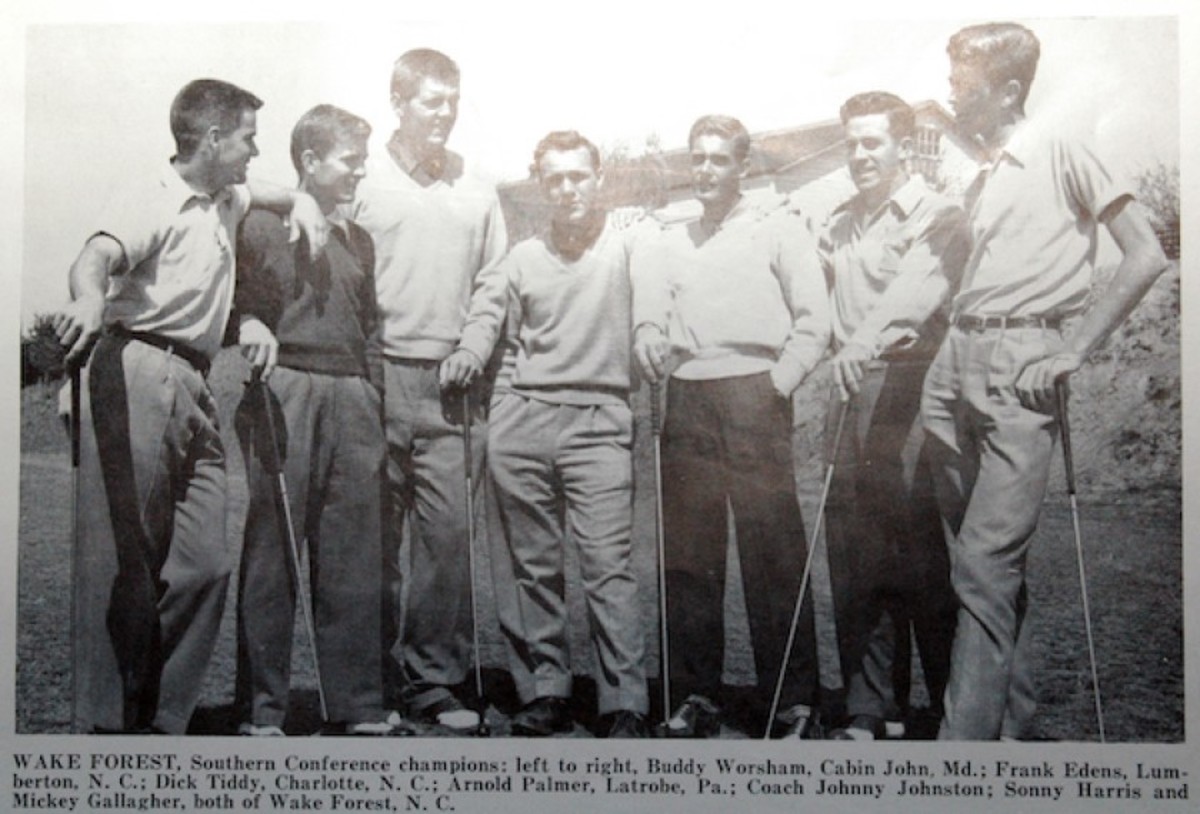Sage wisdom from a University of New Mexico golf icon

I had never heard his name, and then I heard it again and again. Only much later did I realize that it foreshadowed a life-changing experience.
The first time I heard the name came after snap-hooking a tee shot out of bounds at the University of New Mexico’s nine-hole North Course in Albuquerque. It went over the fence and into a front yard across the street. My playing partner said, “Oh, you just hit John Dear's house.”
A few days later, I passed two guys huddled by the wall near the clubhouse door, one pointing to an old photo and saying, “That's John Dear.” This happened several more times. The occurrences were spooky enough that I dug into the clip library of the newspaper I worked for to find out who John Dear was.
I learned he was the guy who persuaded UNM to build an 18-hole course in 1966, even going into the mountains with UNM’s president during construction to dig up a truckload of pine seedlings to plant on the new course. He was the university’s golf coach in 1950 when Arnold Palmer and the NCAA championship came to town. He was a genuine pioneer of New Mexico golf and a talented player in his own right.
I lacked that kind of talent and still do. Starting out, I played the way most kids play. Swing away, go find the ball one fairway over. Swing again harder.
Growing up in Pittsburgh, I bought my first set of clubs at a local supermarket the way people of modest means in the 1960s sometimes bought dinnerware — a salad plate one week, dessert plate the next. Northwestern irons were $3.95 apiece, Kroydon woods were $5.95. After 14 weeks I had a set.
At the muni I played, kids like us often were paired with unlucky adult singles — sometimes steelworkers just off work, playing in steel-toed boots, the stench of the mill still on their green or gray work clothes, their faces flushed red from the heat of the furnace.
These men played with an intense seriousness, and they would get angrier as the round progressed — mad at us, we thought at the time, because we were kids goofing off. All we wanted to do was blast the ball as far and high as we could. They were playing golf. Looking back, I realize we were in parallel universes.
Into adulthood, the whacking of the golf ball stopped for me and the pursuit of lower scores began. There were lessons, competitions, semi-regular games. Like those millworkers, for me the golf course soon became a stage for my own silent rage. Rounds were reduced to chunks and thins, a few good shots mixed in, and fitful, fuming walks in between.
And then John Dear came into my life. He was well into his 70s that day, the only one we shared and then only for a couple of hours. It was after work, where I was having issues. I was storming solo around the nine-hole UNM course blowing off steam. I had paid up front for a second nine and was finishing on No. 9 when I saw an old man leave the golf shop and head for No. 1 tee.
In no mood for company, I picked up my ball and hustled to get there ahead of him. He quickened his pace and we arrived at the same time. He stuck out his hand and said, “Mind if I play along? I'm John Dear.”
I’d been hearing that name for weeks and told him so. Did he live on Stanford, across from No. 6? Yes, he said. Did he find a Titleist on his lawn? “All the time,” he said.
I learned later that John Dear grew up in East Texas, went to college, became a teacher and enlisted in the Navy during World War II. At the war's end he was the gunnery officer on a munitions ship anchored off Tinian Island, preparing for the invasion of Japan. The Hiroshima and Nagasaki bombs changed all that. After the war, he headed to California on Route 66, but like so many others of that era stopped in Albuquerque and decided to go no farther.

The 1950 NCAA Golf Championships, played at the Championship Golf Course at the University of New Mexico, featured a Wake Forest University team led by Arnold Palmer, center. North Texas State, though, won the first of three successive team titles, while Purdue University's Fred Wampler won individual honors.
The two hours we spent together were … magical. That is the only word I can think of. His approach was subtle, as if he were a Zen master or a Jedi knight shaping my psyche. He never used the word “Grasshopper,” but it was there in his tone. I recall he reproved me only once, for dragging my pull cart across a tee. “Treat the course with respect and it will respect you.”
He spoke quietly. I can’t remember everything he said but one thought was, “Never have anything suspended while another player plays. They can feel it.” His favorite was “Not far away, but fairway,” said after center-piping yet another 150-yard drive. Because he played with me from the blue tees, his approaches would come up short, but he got up and down for par each time for an even-par nine-hole round.
Our chit-chat while walking was about the design and construction of the course, the trees, details and contours that he saw – all subtleties to which I was blind. He explained that during every round he took time to see the beauty of the course, no matter how he was playing. All I saw was my own lousy play.
Everything changed after that day. The anger drained away. No more slamming of clubheads into the ground. The marching stopped and the walking began. It wasn’t about not caring; instead it was about not caring too much. I vowed that regardless of how poorly I played, I’d savor the idea of spending four hours in a beautiful place.
Yes, John Dear changed my life, and not just in how I view the game. About two years later, I heard he had died and I offered to write his obituary for the sports desk. Readers responded to the piece favorably and the sports editor asked me to write a regular golf column, for me a welcome change from the politics, corruption and tales of woe on my real beat.
So, two hours with John Dear changed my life in several ways, but most importantly it changed how I view each and every round, and each and every shot. I’m not a kid any more but once in a while during a competition, just for the heck of it, I step up to the ball and think, I’m going to hit this thing a mile.
